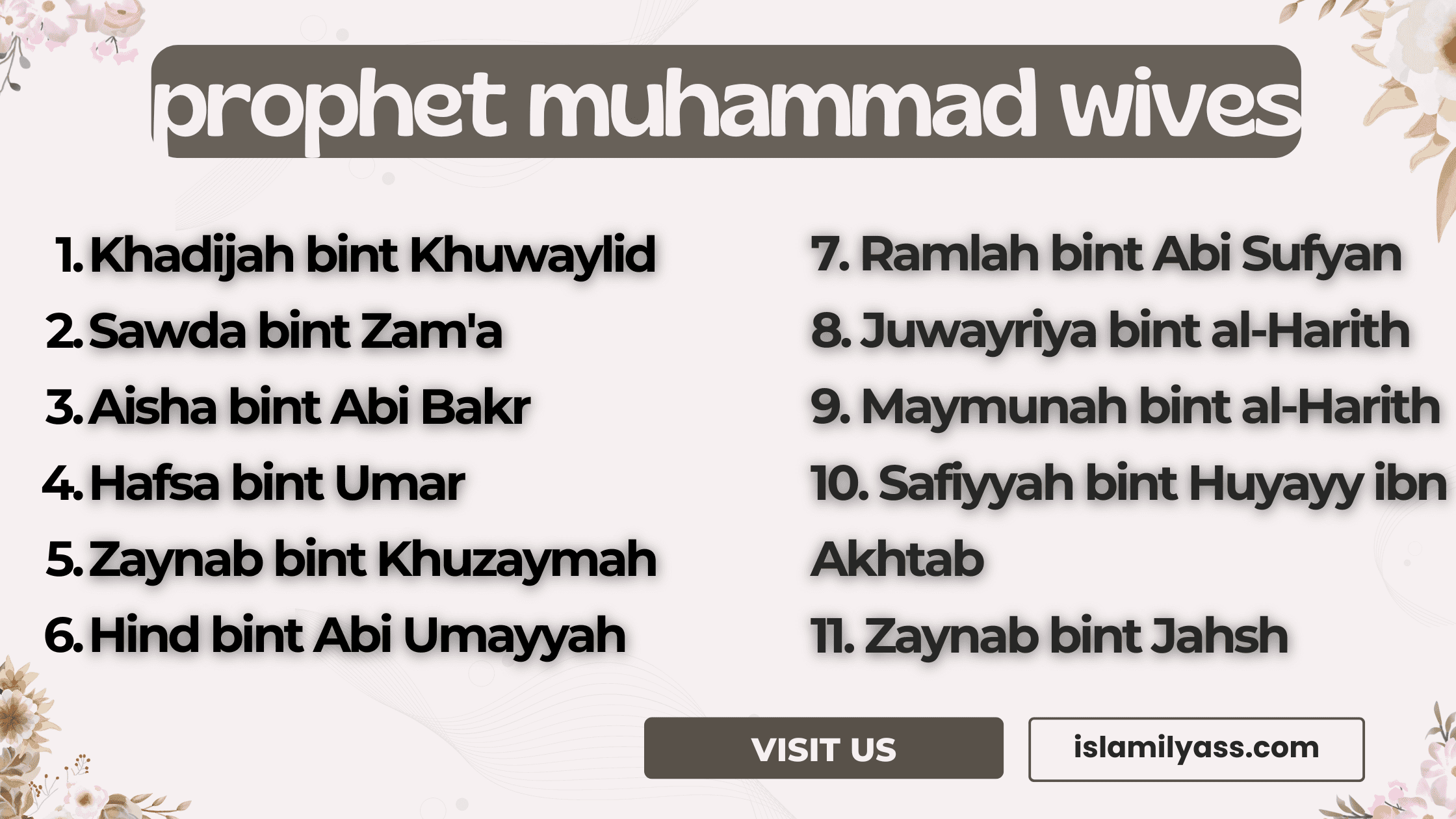1. Khadijah bint Khuwaylid:
The Prophet Muhammad (peace and blessings be upon him) married her when he was 25 years old, and she was 40. She was the to begin with spouse of the Prophet, and he did not wed any other lady amid her lifetime. Woman Khadijah was the mother of all of the Prophet’s children, but for Ibrahim, who was born to Woman Maria. After Lady Khadijah’s passing, the Prophet hitched various women.. She was one of the best ladies of the Ummah, and researchers have contrasted on whether she or Woman Aisha (may Allah be satisfied with them) was prevalent. Khadijah was the first woman to believe in Allah and His Messenger from this Ummah. She never upset or angered the Prophet, and he never had any grievances or quarrels with her, which is a great merit and virtue.
2. Sawda bint Zam’a:
The Prophet Muhammad (peace be upon him) married her after Khadijah’s death and before the Hijrah. She was around the same age as Lady Khadijah, about 66 years old. The reason for their marriage was that she had migrated with her husband to Abyssinia to escape the persecution of the Quraysh. When her husband passed away, she returned to Mecca, and her family, who were polytheists, almost forced her to abandon her faith. To protect her from this trial, she became the Prophet’s second wife.
3. Aisha bint Abi Bakr:
She was around nine years old at the time of her marriage, but the Prophet did not consummate the marriage until after the Hijrah. The marriage strengthened the Prophet’s bond with her father, Abu Bakr al-Siddiq (may Allah be pleased with him). All of the Prophet’s other wives were previously married, except for Lady Aisha, who was the only virgin. Among her one of a kind qualities, disclosure would plummet upon the Prophet whereas he was in her bed, something that did not happen with any of his other spouses. Allah also exonerated her from the false accusations made against her by the people of slander (al-Ifk), and her guiltlessness was uncovered in verses of the Qur’an, which will be presented until the Day of Judgment, as found in Surah al-Nur. Senior companions (may Allah be pleased with them) would seek her counsel when unsure about religious matters and would find knowledge with her.
4. Hafsa bint Umar:
The Prophet (peace be upon him) married her after the Hijrah. The marriage further strengthened the Prophet’s relationship with her father, Umar ibn al-Khattab (may Allah be pleased with him), who was one of the Prophet’s closest advisors and supporters.
5. Zaynab bint Khuzaymah:
She was 60 a long time ancient when she hitched the Prophet and lived with him for as it were two a long time some time recently passing absent. Known as “the Mother of the Destitute” due to her charitable nature, her spouse was slaughtered amid the Fight of Uhud. The Prophet’s marriage to her was to give her with security and empower her to proceed her bolster of the destitute.
6.Hind bint Abi Umayyah (Umm Salamah)
She belonged to the tribe of Makhzum and became a widow while still young. The Prophet saw that she had children who required care and since both she and her late companion were drifters who had cleared out their families behind, he hitched her to donate confirmation and back for her and her children.
7. Ramlah bint Abi Sufyan (Umm Habibah):
She traveled to Abyssinia with her husband, but he converted to Christianity while they were there. Faced with either returning to her father, who was an enemy of the Prophet at the time, or being coerced into abandoning her faith, she married the Prophet to protect her from falling into disbelief. The marriage also served to forge a bond with Abu Sufyan and soften his heart, as Arabs traditionally respected bonds of kinship formed through marriage.
8. Juwayriya bint al-Harith:
The Prophet (peace be upon him) married her after the Battle of Banu al-Mustaliq. She had embraced Islam, and following her marriage to the Prophet, the Muslim companions freed 100 captives from her tribe, saying, “How can we enslave the in-laws of the Messenger of Allah?”
9. Maymunah bint al-Harith:
She offered herself in marriage to the Prophet. When she learned that the Prophet had proposed to her, she declared, “The camel and all that is on it are for Allah and His Messenger.”
10. Safiyyah bint Huyayy ibn Akhtab:
She was taken captive along with her sister during the conquest of Khaybar. Initially, she was allocated to Dihya al-Kalbi, but when the Prophet learned that she was the daughter of a prominent Jewish leader, he felt it more appropriate for her to become his wife. By marrying her, the Prophet preserved her honor and dignity, and her freedom was granted as her dowry.
11. Zaynab bint Jahsh:
She was at first hitched to Zayd ibn Harithah, whom the Prophet had received, After their divorce, the Prophet received a divine command to marry her, as an important step in abolishing the pre-Islamic practice of adoption that equated adopted sons with biological ones. This marriage was a authoritative illustration to clarify that it is allowable for devotees to wed the separated spouses of their received children.
These are the eleven women whom the Prophet (peace and gifts be upon him) hitched and satisfied the marriage with. Two of them, Khadijah and Zaynab bint Khuzaymah, passed absent amid his lifetime, and he cleared out behind nine spouses at the time of his passing. The Prophet’s marriages were for various noble purposes, including religious and political reasons, strengthening ties, and providing support to widows. Some marriages were commanded by divine revelation, and none were driven by mere desire. Had that been the case, the Prophet would have chosen more virgins or young women, especially after the migration when Islam gained strength, conquests occurred, and the Muslim community grew innumber.

